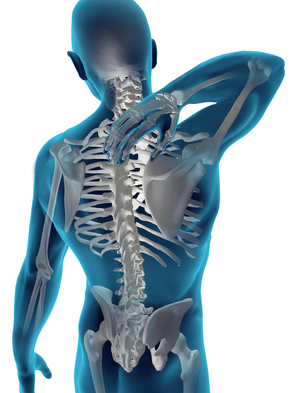By Barbara Greenwood Dufour
Many people with chronic pain struggle to find treatment options that give sufficient relief. Over-the-counter pain relievers are often not effective enough, and opioids don’t tend to be very effective for the long term and carry significant safety risks. Often, patients have to use a variety of different methods to cope with their pain, and there is a growing interest in incorporating non-drug therapies into this approach. Hyperbaric oxygen therapy (HBOT) is one non-drug treatment that has been proposed for helping manage chronic pain.
The descriptions of HBOT that are provided by some clinics make it sound like a modern spa treatment — you breathe fresh air while napping in a tube-shaped chamber and wake up feeling rejuvenated. But HBOT has been around since the 1600s and used for nearly a hundred years to treat decompression sickness caused by deep-sea diving accidents. Over the decades, it’s been shown to be effective for treating many other injuries and conditions, including diabetic ulcers, bone infections, acute thermal burns, carbon monoxide poisoning, flesh-eating disease, and severe anemia.
To receive HBOT, patients enter a sealed chamber. Once inside, the atmospheric pressure is increased to three times the normal air pressure, and the air is 100 per cent oxygen (air is typically about 21 per cent oxygen). The chamber can be a single-person tube that a patient lies down in, or it can be a hospital room-sized chamber that can accommodate several patients, typically seated. In the case of a multi-patient chamber, the oxygen is delivered through a hood or mask. The combination of pure oxygen and high atmospheric pressure allows patients’ lungs to take in more oxygen than usual. The bloodstream then delivers the oxygen to tissues throughout the body, which fights infection and promotes healing.
In addition to the established indications for which HBOT has been shown to be effective, some clinics offer the therapy as an “investigational” treatment for other conditions, including those involving chronic pain — such as fibromyalgia, headaches, and complex regional pain syndrome. HBOT would be a welcome addition to the chronic pain management toolkit if it is clinically effective. So what does the evidence say?
CADTH — an independent agency that finds, assesses, and summarizes the research on drugs and medical devices — was recently asked to look for the evidence on HBOT for the treatment of chronic pain in adults. To produce its Rapid Response Report on this topic (see Hyperbaric Oxygen Therapy for the Treatment of Chronic Pain: A Review of Clinical Effectiveness and Cost-Effectiveness), CADTH searched for the relevant research that’s currently available, finding one randomized controlled trial (RCT) and one prospective non-randomized study.
The RCT enrolled 60 female patients with fibromyalgia — a condition that causes chronic widespread pain throughout the body — who were provided HBOT each day for five days per week over two months. The study found that the treatment increased pain thresholds, physical function, and health-related quality of life, while decreasing tender points and psychological distress. Single photon emission computed tomography (SPECT) imaging of the participants’ brains after treatment showed that the areas where abnormal activity is typically seen in fibromyalgia patients had undergone beneficial changes.
The prospective non-randomized study enrolled 30 patients diagnosed with myofascial pain syndrome — a chronic pain disorder that affects the muscles or their connective tissues — who were administered HBOT for five days per week over two weeks. The treatment increased pain thresholds and health-related quality of life and decreased disability, effects that were found to be sustained at the three-month point.
HBOT might not necessarily feel like a day at the spa, but it appears to be relatively safe. The RCT assessed adverse events associated with the treatment and, of the 60 patients in the study, 13 experienced mild and temporary barotrauma related to the change in air pressure. This was most likely pain or discomfort in the ears, and it didn’t prevent the patients from continuing with the treatments. Five dropped out of the study because of ear pressure issues, dizziness, or claustrophobia (it’s unclear what type of chamber was used in the study, but claustrophobia might be less of an issue in a room-sized chamber).
Although the research suggests that HBOT could benefit patients with fibromyalgia and myofascial pain syndrome, the evidence comes only from these two small studies. And since the studies were short in duration, we don’t know if HBOT would be effective over a longer time frame. The use of an old technology to treat a condition that seems recently to be on the increase is intriguing; and HBOT for these and, potentially, other types of chronic pain appears promising. More studies, however, are needed to confirm the results of the research conducted to date.
To learn more about CADTH, visit www.cadth.ca, follow us on Twitter: @CADTH_ACMTS, or talk to our Liaison Officer in your region: www.cadth.ca/contact-us/liaison-officers.
Barbara Greenwood Dufour is a Knowledge Mobilization Officer at CADTH.




